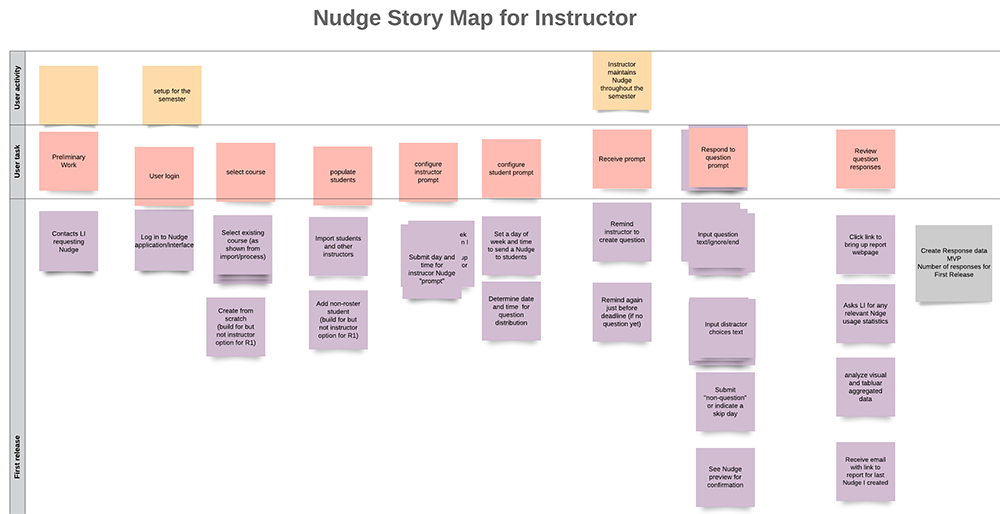Discovery
UX Workshops
A few examples of UX workshops I’ve designed and facilitated.
Design Thinking
I was asked to assist in leading a design thinking workshop for the ‘Hack Your Eduction’ Spring Breakthrough course in collaboration with two faculty and two members of my team. Specifically, my role was to provide guidance for ideation techniques and to help students design a usability test appropriate for their prototype. A working knowledge of many techniques for ideation and testing was required as I wouldn’t know the details of the project until I stepped into the classroom - ideas were rapidly evolving.
The students had chosen a project to promote the adoption of open educational resources which they hoped would make course materials more affordable and accessible should more faculty adopt them. They had designed a series of promotional assets. I suggested they test these materials in two ways - with a five-second test to validate the effectiveness of their messages, and with role playing to ensure their messages would resonate with faculty.
Questions asked in the 5-second usability test:
- What do you remember from the page you just saw?
- What do you think is the purpose of the page?
- What was the most prominent element that you remember from the page?
For the role playing exercise, I used IDEO’s Design Kit to share the description and steps of the activity.
User Story Mapping with Elevator Pitch
In fall 2020, a few teammates approached me about facilitating a workshop for their project team that would help them gain product focus and scope out an MVP. Some members of the team were frustrated by feature suggestions that seemed out of step with the original product vision, and the lack of focus left the developer confused about how to proceed building the tool.
The team had seen the results of other story mapping workshops I had led and thought that would be helpful exercise. To help the team focus their product vision around a value proposition for their users, I started the workshop with an elevator pitch exercise from ‘Crossing the Chasm’ by Geoffrey Moore.
As with all workshops I lead, I sent the team information about user story mapping and the elevator pitch exercise in advance along with the expected outcome of the workshop. We used Lucidchart as our collaboration tool for the workshop over Zoom. I created a page for each participant in the workshop as a space where they could individually brainstorm their elevator pitch and user stories before moving them to a collective page.
We started the workshop with all participants writing their own elevator pitch and then moving their pitch to a collective page. The participants then dot-voted on their favorite pitch. Once the best pitch was identified, we worked as a group to refine the pitch drawing elements from all examples until we had a single refined pitch.

Once the product’s elevator pitch was written, the group moved to writing the user stories (tasks) for the product from the instructor’s perspective. A second session was conducted later from the student’s perspective on the product.

Assumption Smash
In spring 2021, I facilitated a discovery session for my team to learn about how we might improve the user experience of navigating the learning technology ecosystem (from the instructor’s perspective).
Everyone on my team works closely with users and provides support for their service. To get the team to think beyond the most common pain points and support requests, I chose to do an Assumption Smash exercise. This would allow the team to differentiate between facts, assumptions, ideas that need validating, and any gaps in our knowledge where we need to learn more about a problem in order to identify solutions. I provided information about the exercise in advance and created a space in Google Jamboard for each participant to brainstorm ideas. The exercise was conducted remotely over Zoom.

